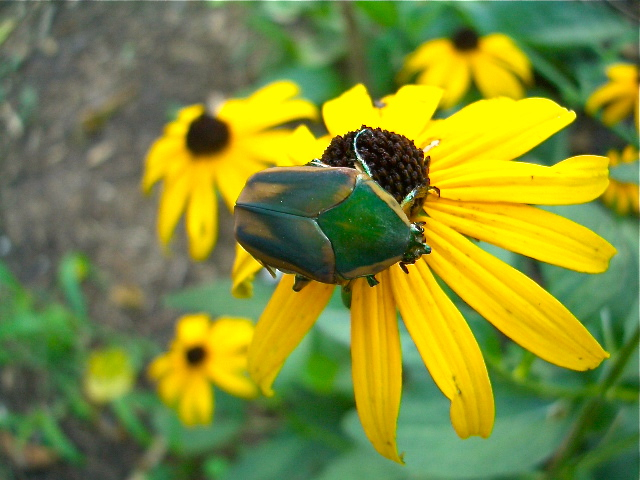Height: 2-3 feet
Spread: 2-2 ½+ feet
Type: Perennial
Origin: Native to central and eastern U.S., including some southern and eastern Oklahoma counties
Exposure: Full sun to part shade
Water: Medium
Edible: no
Medicinal: no
Companions: Sporobolus heterolepis (prairie dropseed), Lobelia cardinalis (cardinal flower), Echinacdea purpurea (purple coneflower)
Notes: Rudbeckia fulgida is the common perennial “black eyed susan” sometimes referred to as “orange coneflower”. It is native to the eastern United States and grows in moist to moderately dry soils in open woods, glades and thickets. It’s dependable profuse display of yellow coneflower blooms make it a somewhat ubiquitous but still very worthy member of any bed. It always performs well in our hot summers and it’s very adaptable to different soil and light situations. The bloom period generally starts in June but deadheading can encourage one or more successive blooms. R. fulgida does spread by rhizomes and will gradually spread but it is easy to divide and control. The divided clumps transplant well, and the blooms make good cut flowers. Plant them en masse as a border or in a cottage, meadow, or a native plant garden setting. Echinacea purpurea is a very nice companion coneflower for R. fulgida. Pollinators, butterflies and other wildlife like R. fulgida.
There are a number of varieties and cultivars of R. fulgida. The most common cultivar is ‘Goldsturm’ which is a very reliable one to go with but there are many others and natural varieties to consider too. The differences between the varieties is fairly subtle and any of the varieties will work well in your landscape and gardens.


